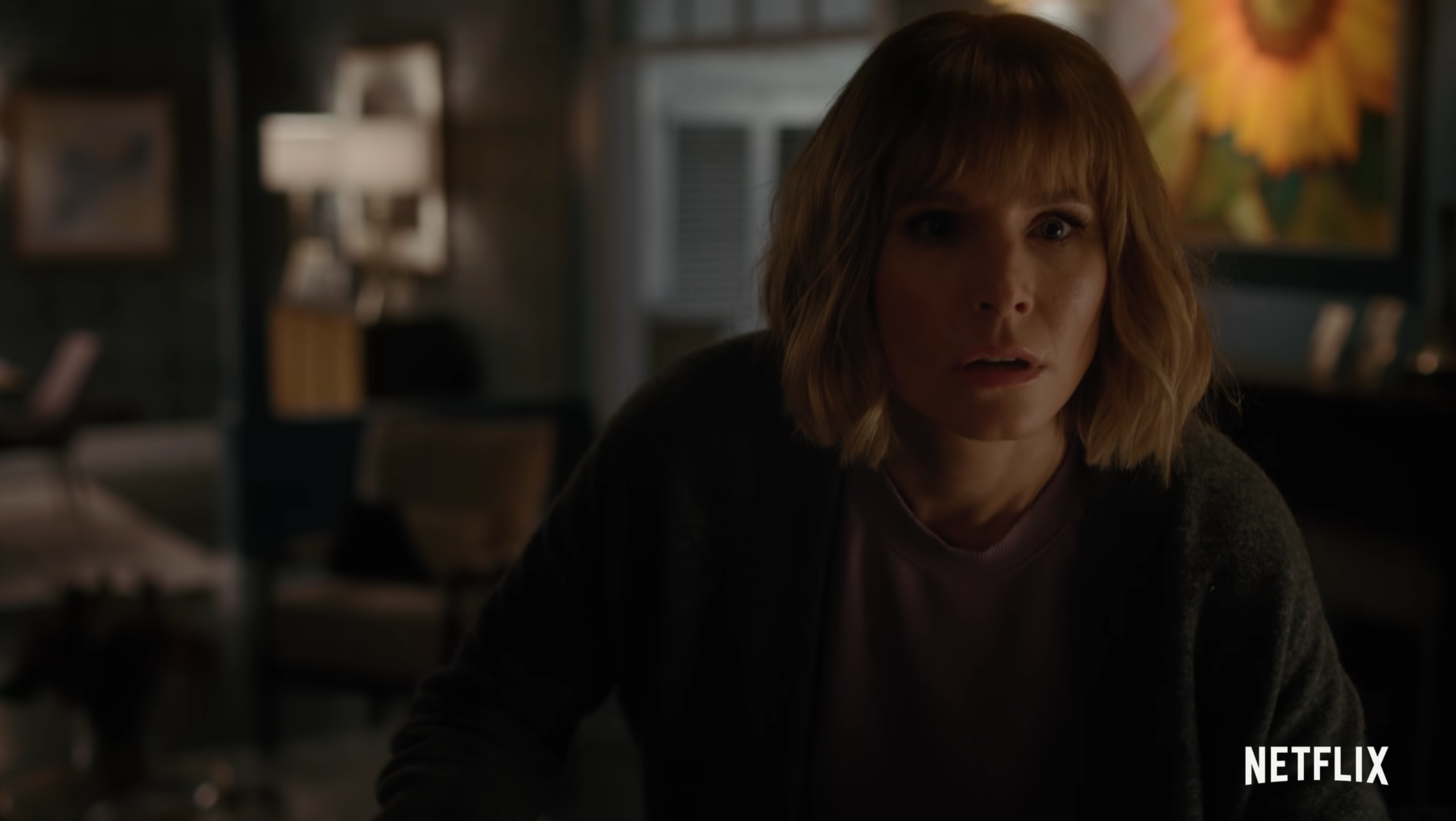By Megha Roy
A title, a storyline that are both tad too long, and a queer take on the turn of events, the new Netflix series, The Woman in the House Across the Street from the Girl in the Window starring Kristen Bell has been gaining quiet a bit of attention lately, notwithstanding the overall mixed reviews. This series offers a comic riff on the domestic thriller genre that usually dominates the listings on streaming services and books. Funny twisted references from domestic thrillers such as House At The End Of The Street and The Woman in the Window make it clear that it is intended to be a spin-off/comical take on the genre, which it fails to live up to.
The protagonist in the movie, Anna (Kristen Bell) is seen as a lonely woman who is grieving the loss of a child and separation from her husband which has led her to live on medicines, and become prone to paranoia, and completely housebound. These have been seen as a blueprint for domestic thrillers. Amy Adams’ character in The Woman in the Window was also named Anna and suffered from debilitating agoraphobia. But here it is used in a satire format, making Bell’s Anna suffer from the fear of rain, or ombrophobia, which started after the death of her daughter. The fact that the reason for the death is not directly related to rain defies logic, making exaggeration a key motif throughout the series.
The writers have created a comedy incorporating dark aspects of thrillers, but at many points the comedy is stretched too long. This format has worked for pure comedy series such as The Simpsons, but here the intended journey of a dark thriller ends up as an over-dragged deadpan comedy. The awkward moments rarely end up being funny. Bell’s Anna, drowned in wine and medication, keeps the audience in a tantalising dilemma of whether to laugh or take serious note of her life when she believes that the girlfriend of the guy living across the street with his young daughter was actually killed.
The series has clich├®s of the genre – jump scares, gaslighting, and creepy children. However, that’s what makes the series┬áridiculous;┬áit┬áemulates┬áthe thrillers it┬áaims┬áto ridicule. Instead┬áof┬ámocking a plethora┬áof┬átropes and characters,┬áThe Woman in the House…┬ásticks┬áclosely┬áto┬áthe plot of The Woman in the Window, which was┬áan obvious riff on Alfred Hitchcock’s┬áPsycho. The┬áresult is┬áenough to make viewers feel┬áthat they are┬átrapped in this┬ámirrored┬áworld, and perhaps that’s the point.┬áBut real satire — which the title itself promises — is rarely produced. You can either laugh at it or with it. Either way, you aren’t going to laugh very hard. In other words, you can use it or ignore it.
The ending is almost impossible to describe, so I won’t try, but viewers will understand why by the time they get there. The intense preceding drama foreshadows what’s to come. The strangest thing about everything in The Woman in the HouseÔǪ is that none of it would be out of place in a bestselling domestic thriller. It is almost as if director Michael Lehmann and his writers tried their hands at both genres and somewhere lost their way, unable to pull off the spoof intended.



